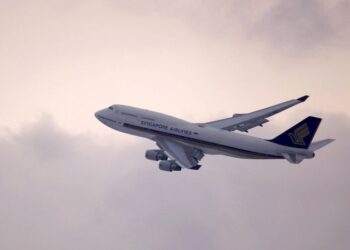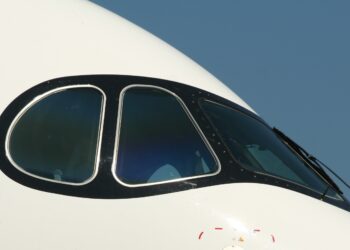Commercial airplanes are designed to fly at specific altitudes. After taking off, it may take a pilot just 10 minutes to reach this “cruising” altitude. The pilot will then maintain this altitude until he or she prepares to land. From the moment a pilot takes off to the minute he or she prepares to land, though, the pilot must avoid flying too high. While commercial airplanes can fly safely and efficiently at their respective cruising altitude, there’s a metaphoric ceiling that limits how high they can fly.
Why Commercial Airplanes Fly at 30,000 to 36,000 Feet
In the commercial aviation industry, typical cruising altitudes range from 30,000 to 36,000 feet. That’s about seven miles above sea level.
The reason commercial airplanes fly at 30,000 to 36,000 feet is because it places them in a unique part of Earth’s atmosphere known as the lower stratosphere. The lower stratosphere is above the clouds, so commercial airplanes are protected against bad weather. If there’s a storm in his or her path, the pilot can simply fly over it by maintaining cruising altitude.
More importantly, though, the air is thinner in the lower stratosphere than it is on the ground or in other parts of Earth’s atmosphere. The thin air creates less resistance, resulting in increased fuel efficiency and performance. Airplanes encounter resistance as their engines attempt to propel them through the air. The air is both cooler and less dense in the lower stratosphere. As a result, airplanes can fly through it more easily.
The Maximum Altitude Airplanes Can Safely Fly
How high can commercial airplanes safely fly? For starters, all commercial airplanes have a maximum altitude for which they are certified to fly. This number reflects the maximum altitude that a commercial airplane has been tested to safely fly at during production. If a commercial airplane exceeds this limit, it may experience mechanical failure.
While most commercial airplanes fly at 30,000 to 36,000 feet, their respective certified maximum altitude is typically slighter higher. Most commercial airplanes have a certified maximum altitude of about 40,000 to 45,000 feet.
Regardless of its certified maximum altitude, if an airplane flies too high, it may fail in one or more ways. For starters, the engine may suffocate from a lack of oxygen. Engines work by mixing air with fuel to create combustion. The higher an airplane flies, the less air the engines will receive. Second, the airplane’s wings may fail to produce a sufficient amount of lift to maintain its current and excessive altitude. Air helps to create lift as it goes over the airplane’s wings. The air is less dense at high altitudes, so the wings will produce less lift.



















